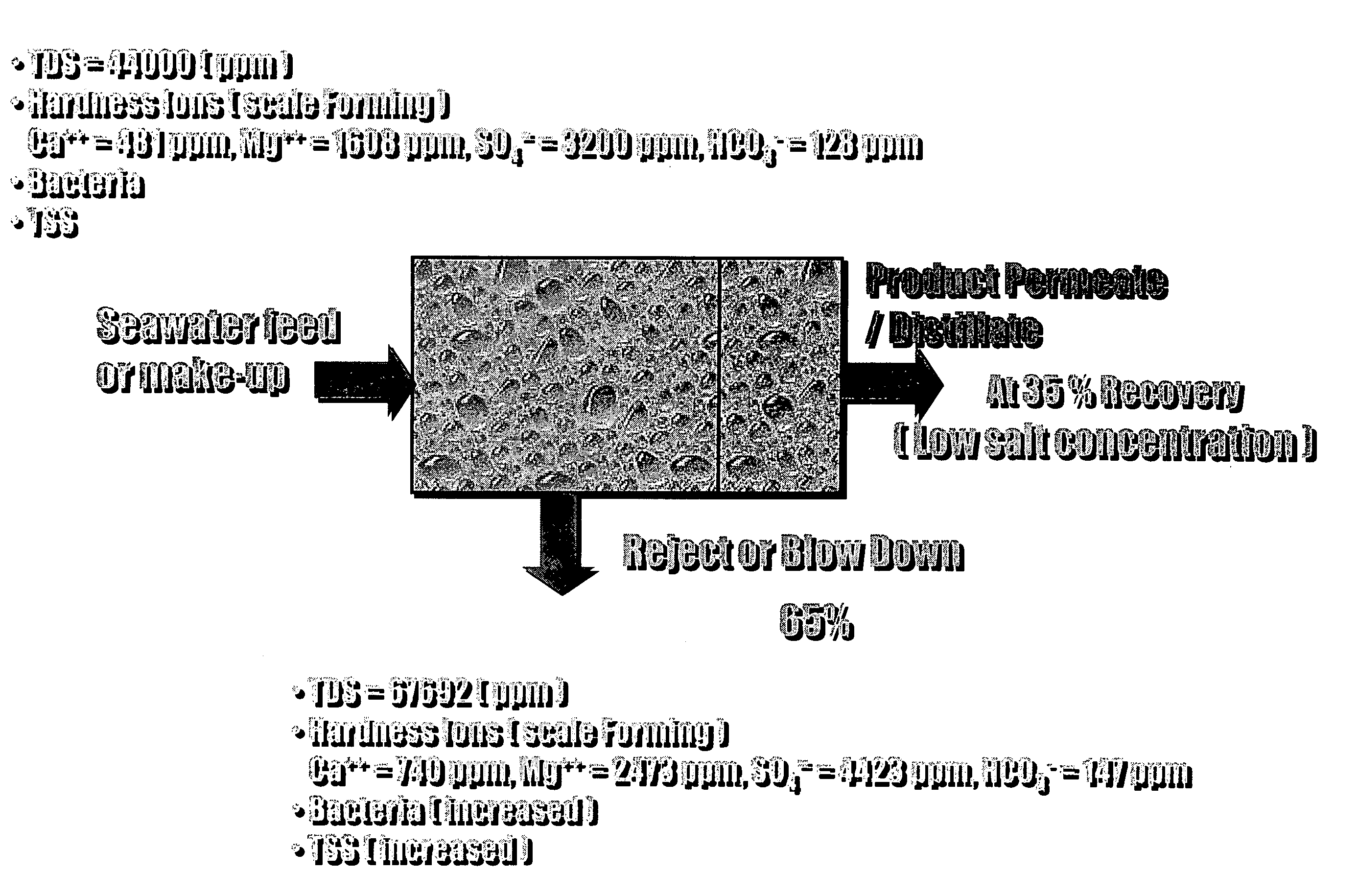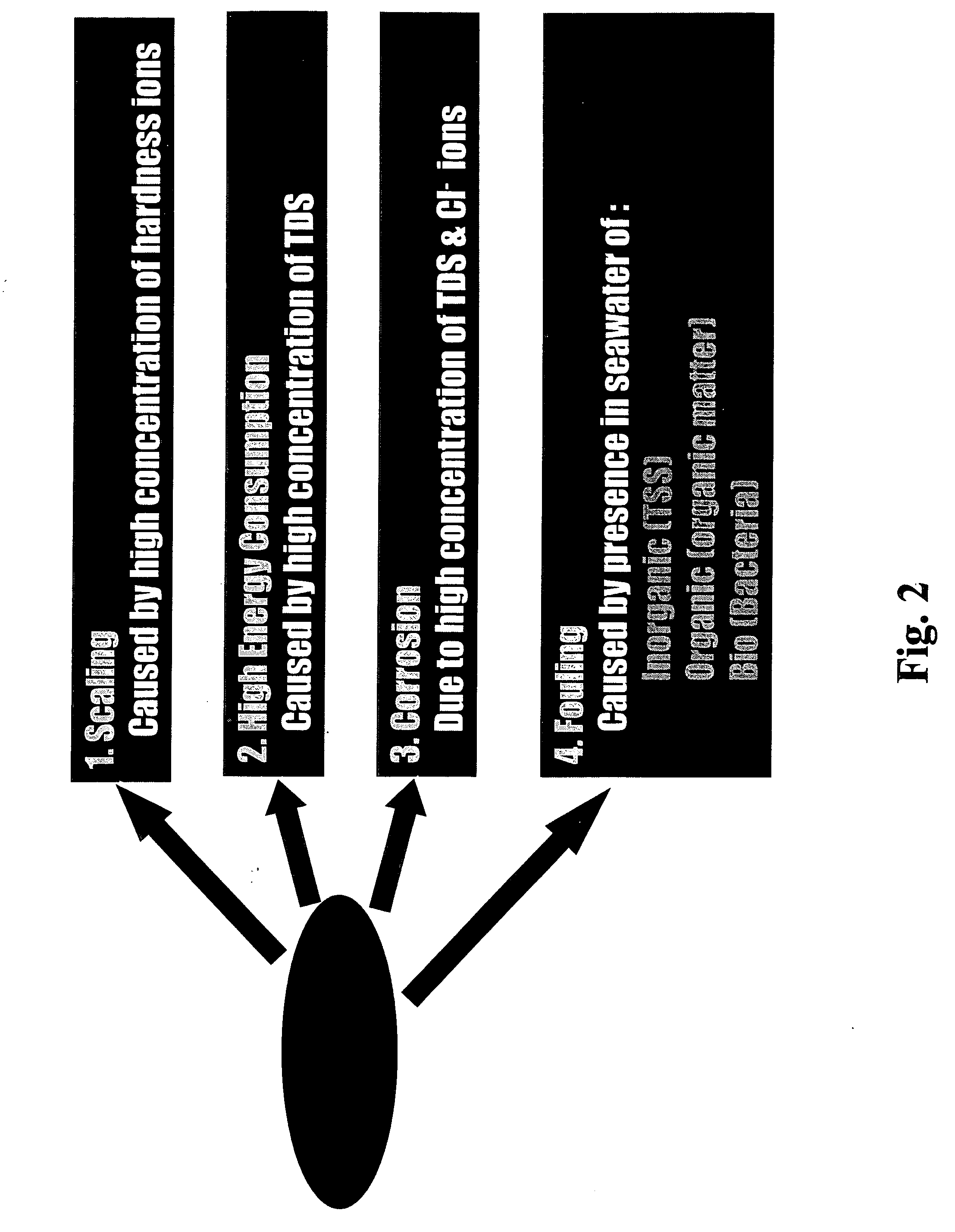Optimal high recovery, energy efficient dual fully integrated nanofiltration seawater reverse osmosis desalination process and equipment
a technology of reverse osmosis desalination and nanofiltration, which is applied in water treatment multi-stage treatments, specific water treatment objectives, water/sludge/sewage treatment, etc., can solve the problems of affecting the performance of the plant, affecting the efficiency of the plant, and the current desalination process cannot compete effectively with other sources of fresh water, etc., to achieve good fresh water including potable water and reduce the effect of saline water
- Summary
- Abstract
- Description
- Claims
- Application Information
AI Technical Summary
Benefits of technology
Problems solved by technology
Method used
Image
Examples
Embodiment Construction
[0065] The present optimal SWRO desalination invention will be best understood by first considering the various components and properties of saline water, and especially of seawater. Seawater, as mentioned earlier, is characterized by having high TDS, a high concentration of hardness due to presence of the scale forming hardness ions of Ca++, Mg++, SO═4 and HCO3− at relatively high concentration of varying degrees of turbidity in the presence of particulate matter, macro and microorganisms and a pH of about 8.2. Many of the problems and their effect on limitations in seawater desalination are related to those seawater qualities. Typically seawater will have a cation content on the order of 1.2%-1.7%, of which typically some 900-2100 ppm will be “hardness” cations, i.e., calcium and magnesium cations; an anion content of scale forming hardness anions, i.e., sulfate and bicarbonate, in the order of 1.2%-2.8%; a pH on the order of 7.9-8.2; although wider ranges of one or more of these ...
PUM
 Login to View More
Login to View More Abstract
Description
Claims
Application Information
 Login to View More
Login to View More - R&D
- Intellectual Property
- Life Sciences
- Materials
- Tech Scout
- Unparalleled Data Quality
- Higher Quality Content
- 60% Fewer Hallucinations
Browse by: Latest US Patents, China's latest patents, Technical Efficacy Thesaurus, Application Domain, Technology Topic, Popular Technical Reports.
© 2025 PatSnap. All rights reserved.Legal|Privacy policy|Modern Slavery Act Transparency Statement|Sitemap|About US| Contact US: help@patsnap.com



